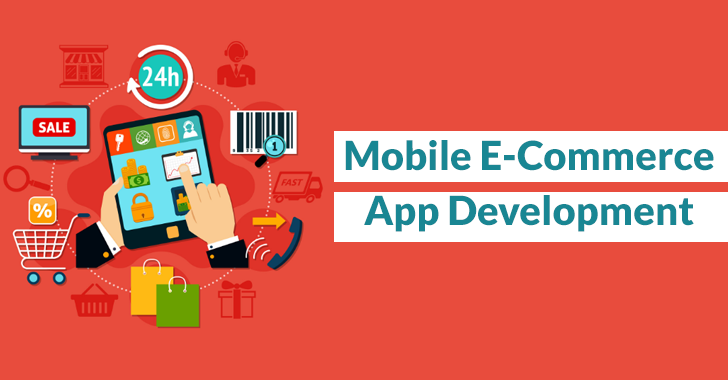
Mobile E-Commerce App Development: 7 Secrets Leading to Success
Have you been struggling to build a mobile app to beat and overtake Amazon? Do you think it’s impossible? No, it isn’t! All you need is to successfully access the secrets of building an e-commerce app. According to this article, 80% of e-commerce apps are deleted after being tried by users.
That shouldn’t make you worry. We’ve written this piece to guide you. In this article, you will explore tips that will give you answers on how to build an eCommerce mobile app and also help you get started with this process.
Table of Contents
How to Build An eCommerce Mobile App Successfully
1. Define Your Audience
Defining your audience is the first step in any e-commerce app development project. The more you know about them and their needs, the better you’ll be able to design an app that meets those needs. Before you begin designing, ask yourself: Who are my ideal customers, and what do they want? What problems do they face as consumers or small businesses? How can I create a solution to elegantly solve their problems? (i.e., not just throwing out another generic product).
Also, you can use tools like Google Trends or AppAnnie to see how many people are searching for similar terms as yours and then analyze their average age, gender, location, and more. From there, you’ll get a better idea of who your ideal customer is—and what they want in an app.
Once you have identified your target audience(s), you can move forward to build an e-commerce android app that genuinely fits them perfectly!
2. Clarify the Purpose of Your App
Another step in this process is defining the purpose of your app. This can be done by asking yourself questions like: What do I want my customers to do after downloading my mobile e-commerce app? Who will use this technology? Once you’ve answered these questions, you’ll better understand how best to structure the rest of your project.
3. Take a Look at your Competitors’ Apps
To make an e-commerce app, it’s essential to first examine your competitors. What features do they offer? What features can you add to your app? How do they compare to each other in terms of functionality and design?
You may have noticed that many popular e-commerce apps today offer loyalty programs. This great feature helps customers feel more connected to your business and their own shopping experience.
4. Choose the Right Features for Your App
Choosing the right features for your app is key to ensuring success. Before you start building e-commerce applications, If there are any features you think should be added or removed from the final product, don’t hesitate! These things will help make your business more successful and give customers what they want. Here are some examples of features that may not be worth including in an e-commerce store:
- A blog section with blog posts from the company’s staff members (Unless those posts relate directly to sales or product promotions)
- Social media links (Unless it’s part of an integrated marketing campaign) and many more.
5. Choose a Mobile Platform
It would help if you also thought about the popularity of the platform you’re choosing. If many apps on the market already have a similar function, it might be more difficult for your app to stand out.
When choosing a mobile platform, consider how many users will use it and how much you want to spend on building e-commerce applications. You can choose between developing an app for Apple’s iOS or Google’s Android operating systems. The more users and revenue potential, the better choice!
If you’re still unsure which platform is right for your app, it’s best to talk to a mobile developer who can help you make an informed decision. They’ll be able to discuss their experience with each platform and let you know what they think will work best for your business goals.
6. Be Prepared: Test Early On!
You must be ready before you build an e-commerce app in android so that there are no surprises during the development or testing phases. If something unexpected happens during testing (such as finding a bug), don’t wait until after launch day—it could cost you customer loyalty and revenue opportunities.
7. Think About the Development Process From A to Z Before You Start Working on the App.
Thinking about the development process will help you plan your project better, save you time and money, and ensure that the app is developed according to your specifications. Here are a few processes to consider:
- Understand the risks involved in building e-commerce applications and make sure that you remember what they are before starting your project.
- Develop a user experience strategy to improve user experience. This means designing relevant features to customer needs and preferences and making sure they are easy for users to access from any device. For example, if a coupon code is only valid for new customers, state this in your email marketing campaigns. This way, users are not surprised by a different price than expected when checking out.
- Get an idea of how much it will cost. You need to know how much money you can spend on your app before you start looking for a developer. This will help you save time and prevent disappointment if the project is more expensive than expected.
You can get at least three quotes from different developers and compare them carefully. Choose the one that’s right for you based on price, quality, and availability of support staff.
- When you begin your mobile ecommerce app development, it is also fundamental to consider how the app will be used. The more convenient and easy-to-use your site or app is, the more customers will use it.
Conclusion
It’s great to learn that developing an e-commerce app is not very complicated. So, now that you’ve known how to build an eCommerce mobile app, what’s next? Consult an expert. Remember, before creating one; you have to understand your audience, choose a platform, and develop the right features for your users.


